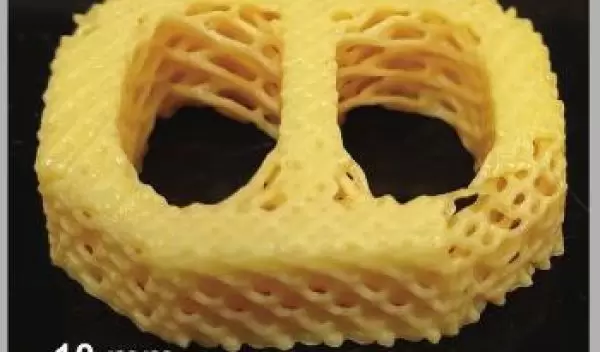
Researchers develop 3D-printable material that mimics biological tissues
Biological tissues have evolved over millennia to be perfectly optimized for their specific functions. Take cartilage as an example. It's a compliant, elastic tissue that's soft enough to cushion joints, but strong enough to resist compression and withstand the substantial load bearing of our bodies, key for running, jumping, and our daily wear and tear.
Creating synthetic replacements that truly match the properties and behaviors of biological tissues hasn't been easy. But University of Colorado Denver scientists, led by mechanical engineer Chris Yakacki, are the first to 3D print a complex, porous lattice structure using liquid crystal elastomers (LCEs) to create devices that can mimic cartilage and other biological tissues.
The National Science Foundation-funded team reported its findings in the journal Advanced Materials.
Yakacki began working with LCEs in 2012. The soft, multifunctional materials are known for their elasticity and extraordinary ability to dissipate high energy.
"Everyone's heard of liquid crystals because you stare at them in your phone display," says Yakacki. "And you've likely heard of liquid crystal polymers because that's exactly what Kevlar is. Our challenge was to get them into soft polymers, like elastomers, to use them as shock absorbers. That's when you go down the layers of complexity."
For the study, Yakacki explored a 3D printing process called digital light processing. His team developed a honey-like liquid crystal resin that, when hit with ultraviolet light, formed new bonds in a succession of thin photopolymer layers. The final cured resin formed a soft, strong, and compliant elastomer. When printed in lattice structures -- levels of patterning akin to a honeycomb -- it began to mimic cartilage.
Going forward, the structures have several applications, such as shock-absorbing football helmet foam or small biomedical implants for toes. Yakacki is most excited about its possibilities in the spine.
"NSF backed this work with a Faculty Early Career Development Program, or CAREER, award, which aims to build a firm foundation for a lifetime of leadership in integrating education and research," says Andy Wells, a program director in NSF's Directorate for Engineering. "This researcher has learned how to manufacture energy-absorbing LCE structures, has supported students involved in fundamental and translational research, and is applying that knowledge for a broader impact in society."


